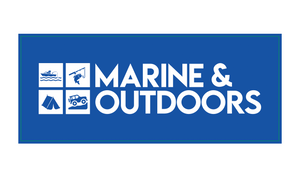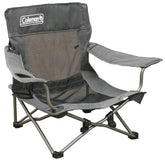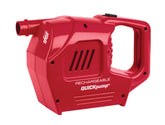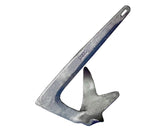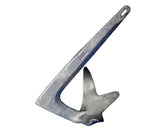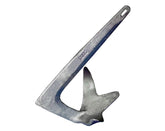Anchors
Filter
98 results
20
- 10
- 15
- 20
- 25
- 30
- 50
Featured
- Featured
- Best selling
- Alphabetically, A-Z
- Alphabetically, Z-A
- Price, low to high
- Price, high to low
- Date, old to new
- Date, new to old
Sort
Sort by:
- Featured
- Best selling
- Alphabetically, A-Z
- Alphabetically, Z-A
- Price, low to high
- Price, high to low
- Date, old to new
- Date, new to old
-
Anchor Claw Galv. 1kg (2.2lb)
Design based on anchors used to secure oil rigs in the North Sea, the Claw anchor sets effortlessly by self aligning on bottom to roll upright. It holds in a variety of seabeds, mainly sand and mud, and stows easily on the bow roller of most boats. ...- $15.90
$24.65- $15.90
- Unit price
- / per
-
Anchor Claw Galv. 2Kg (4.4lb)
Design based on anchors used to secure oil rigs in the North Sea, the Claw anchor sets effortlessly by self aligning on bottom to roll upright. It holds in a variety of seabeds, mainly sand and mud, and stows easily on the bow roller of most boats. ...- $23.50
$36.42- $23.50
- Unit price
- / per
-
Anchor Claw Galv. 5kg (11lb)
Design based on anchors used to secure oil rigs in the North Sea, the Claw anchor sets effortlessly by self aligning on bottom to roll upright. It holds in a variety of seabeds, mainly sand and mud, and stows easily on the bow roller of most boats. ...- $102.00
$92.38- $102.00
- Unit price
- / per
-
Anchor Claw Galv. 7.5kg (16.5lb)
Design based on anchors used to secure oil rigs in the North Sea, the Claw anchor sets effortlessly by self aligning on bottom to roll upright. It holds in a variety of seabeds, mainly sand and mud, and stows easily on the bow roller of most boats. ...- $155.00
$141.36- $155.00
- Unit price
- / per
-
Anchor Claw Galv. 10kg (22lb)
Design based on anchors used to secure oil rigs in the North Sea, the Claw anchor sets effortlessly by self aligning on bottom to roll upright. It holds in a variety of seabeds, mainly sand and mud, and stows easily on the bow roller of most boats. ...- $205.00
$186.00- $205.00
- Unit price
- / per
-
Anchor Claw Galv. 15kg (33lb)
Design based on anchors used to secure oil rigs in the North Sea, the Claw anchor sets effortlessly by self aligning on bottom to roll upright. It holds in a variety of seabeds, mainly sand and mud, and stows easily on the bow roller of most boats. ...- $275.00
$249.55- $275.00
- Unit price
- / per
-
Anchor Claw Galv. 20kg (44lb)
Design based on anchors used to secure oil rigs in the North Sea, the Claw anchor sets effortlessly by self aligning on bottom to roll upright. It holds in a variety of seabeds, mainly sand and mud, and stows easily on the bow roller of most boats. ...- $338.00
$307.50- $338.00
- Unit price
- / per
-
Anchor Claw Galv. 30kg (66lb)
Design based on anchors used to secure oil rigs in the North Sea, the Claw anchor sets effortlessly by self aligning on bottom to roll upright. It holds in a variety of seabeds, mainly sand and mud, and stows easily on the bow roller of most boats. ...- $520.00
$472.50- $520.00
- Unit price
- / per
-
Anchor Claw Galv. 50kg (110lb)
Design based on anchors used to secure oil rigs in the North Sea, the Claw anchor sets effortlessly by self aligning on bottom to roll upright. It holds in a variety of seabeds, mainly sand and mud, and stows easily on the bow roller of most boats. ...- $926.00
$841.50- $926.00
- Unit price
- / per
-
Anchor Claw S/S 1KG/2.2LB
The design of this stainless steel anchor is based on that of anchors used to secure oil rigs in the North Sea. This claw anchor is constructed of high-grade 316 stainless steel, cast in a single piece. Available in sizes from 1-30kg- $93.50
$0.00- $93.50
- Unit price
- / per
-
Anchor Claw S/S 2KG/4.4LB
The design of this stainless steel anchor is based on that of anchors used to secure oil rigs in the North Sea. This claw anchor is constructed of high-grade 316 stainless steel, cast in a single piece. Available in sizes from 1-30kg- $148.00
$0.00- $148.00
- Unit price
- / per
-
Anchor Claw S/S 5KG/11LB
The design of this stainless steel anchor is based on that of anchors used to secure oil rigs in the North Sea. This claw anchor is constructed of high-grade 316 stainless steel, cast in a single piece. Available in sizes from 1-30kg- $405.00
$0.00- $405.00
- Unit price
- / per
-
Anchor Claw S/S 7.5KG/16.5LB
The design of this stainless steel anchor is based on that of anchors used to secure oil rigs in the North Sea. This claw anchor is constructed of high-grade 316 stainless steel, cast in a single piece. Available in sizes from 1-30kg- $612.00
$0.00- $612.00
- Unit price
- / per
-
Anchor Claw S/S 10KG/22LB
The design of this stainless steel anchor is based on that of anchors used to secure oil rigs in the North Sea. This claw anchor is constructed of high-grade 316 stainless steel, cast in a single piece. Available in sizes from 1-30kg- $819.00
$0.00- $819.00
- Unit price
- / per
-
Anchor Claw S/S 15KG/33LB
The design of this stainless steel anchor is based on that of anchors used to secure oil rigs in the North Sea. This claw anchor is constructed of high-grade 316 stainless steel, cast in a single piece. Available in sizes from 1-30kg- $1,176.00
$0.00- $1,176.00
- Unit price
- / per
-
Anchor Claw S/S 20KG/44LB
The design of this stainless steel anchor is based on that of anchors used to secure oil rigs in the North Sea. This claw anchor is constructed of high-grade 316 stainless steel, cast in a single piece. Available in sizes from 1-30kg- $1,549.00
$0.00- $1,549.00
- Unit price
- / per
-
Anchor Claw S/S 30KG/66LB
The design of this stainless steel anchor is based on that of anchors used to secure oil rigs in the North Sea. This claw anchor is constructed of high-grade 316 stainless steel, cast in a single piece. Available in sizes from 1-30kg- $2,653.00
$0.00- $2,653.00
- Unit price
- / per
-
VETUS 5 kg / 11lb Maxclaw anchor Stainless steel AISI316 P105060
De “Maxclaw” roestvast stalen (AISI 316) ankerseries zijn gebaseerd op het bewezen “North Sea”ontwerp en zijn beschikbaar in 5 verschillende maten voor boten van 4 - 18 m (12 - 58 ft).- $368.00
- $368.00
- Unit price
- / per
-
VETUS 8 kg / 17lb Maxclaw anchor Stainless steel AISI316 P105061
The “MAXCLAW” 316 Stainless Steel anchor range, based on the proven ‘North Sea’ claw design is available in seven different sizes to suit boats from approximately 4 metres (12’) to 18 metres (58’).- $534.00
- $534.00
- Unit price
- / per
-
VETUS 10 kg / 22lb Maxclaw anchor Stainless steel AISI316 P105062
The “MAXCLAW” 316 Stainless Steel anchor range, based on the proven ‘North Sea’ claw design is available in seven different sizes to suit boats from approximately 4 metres (12’) to 18 metres (58’).- $692.00
- $692.00
- Unit price
- / per

